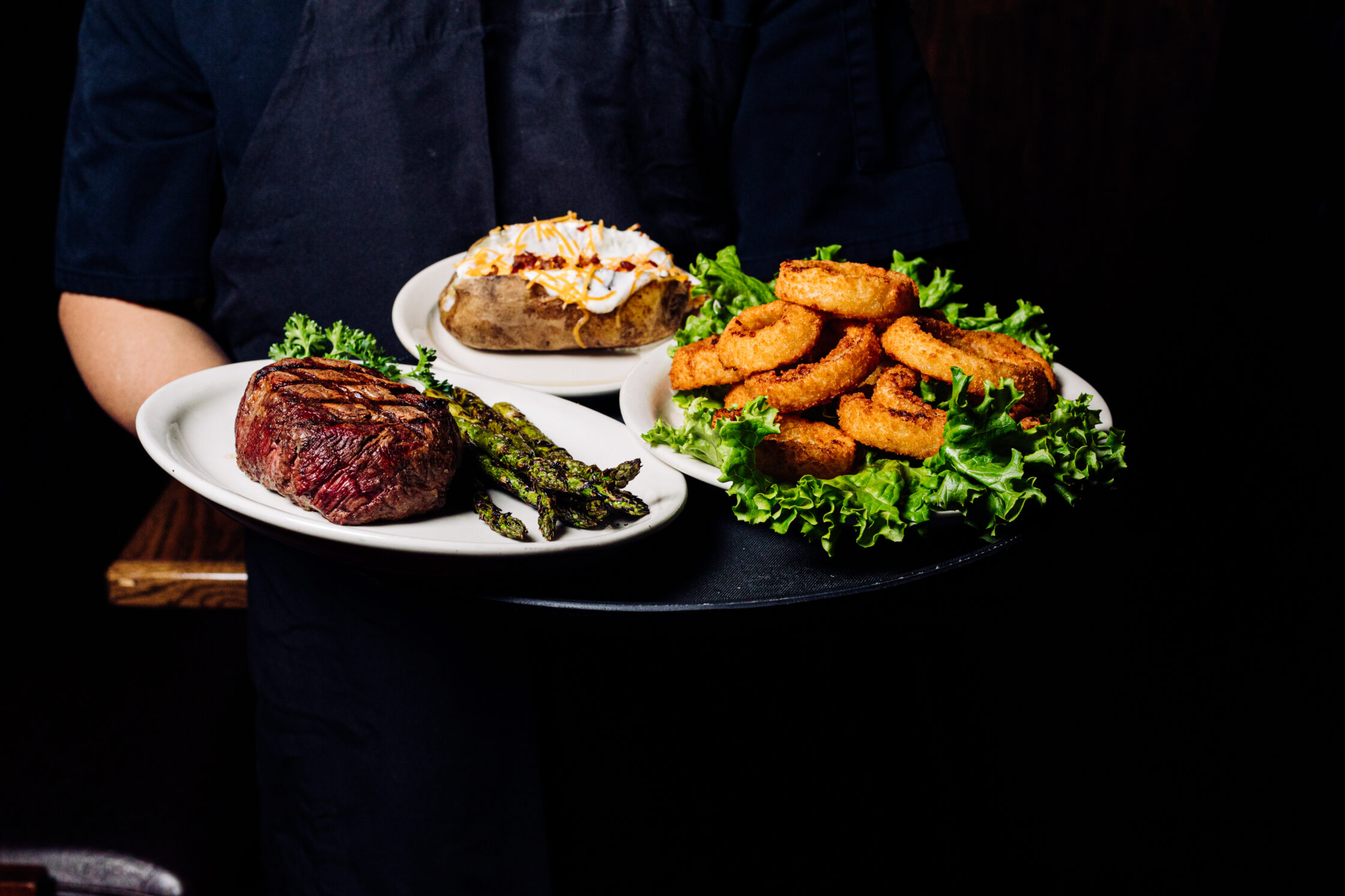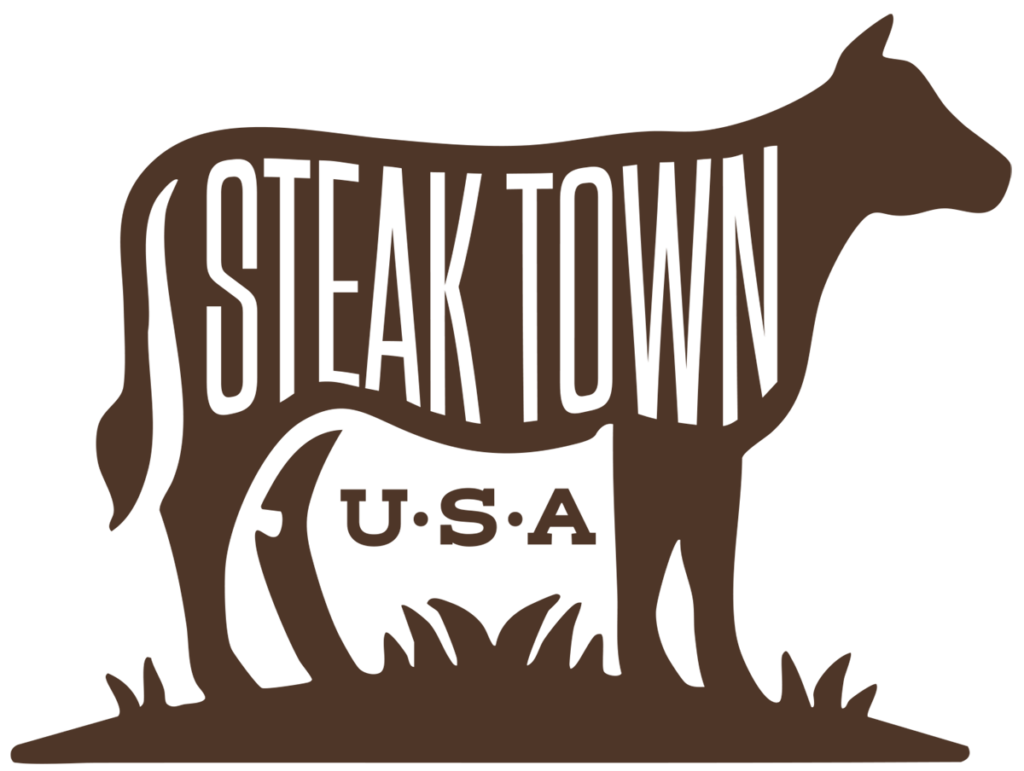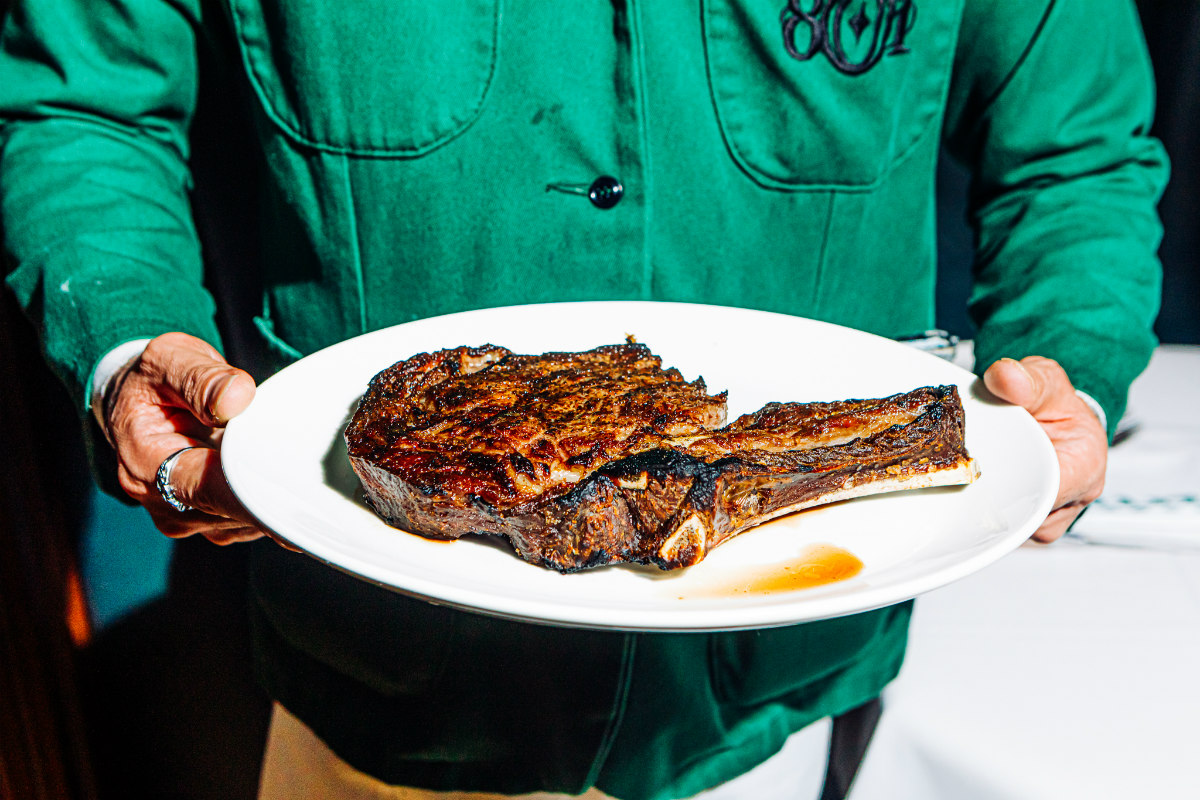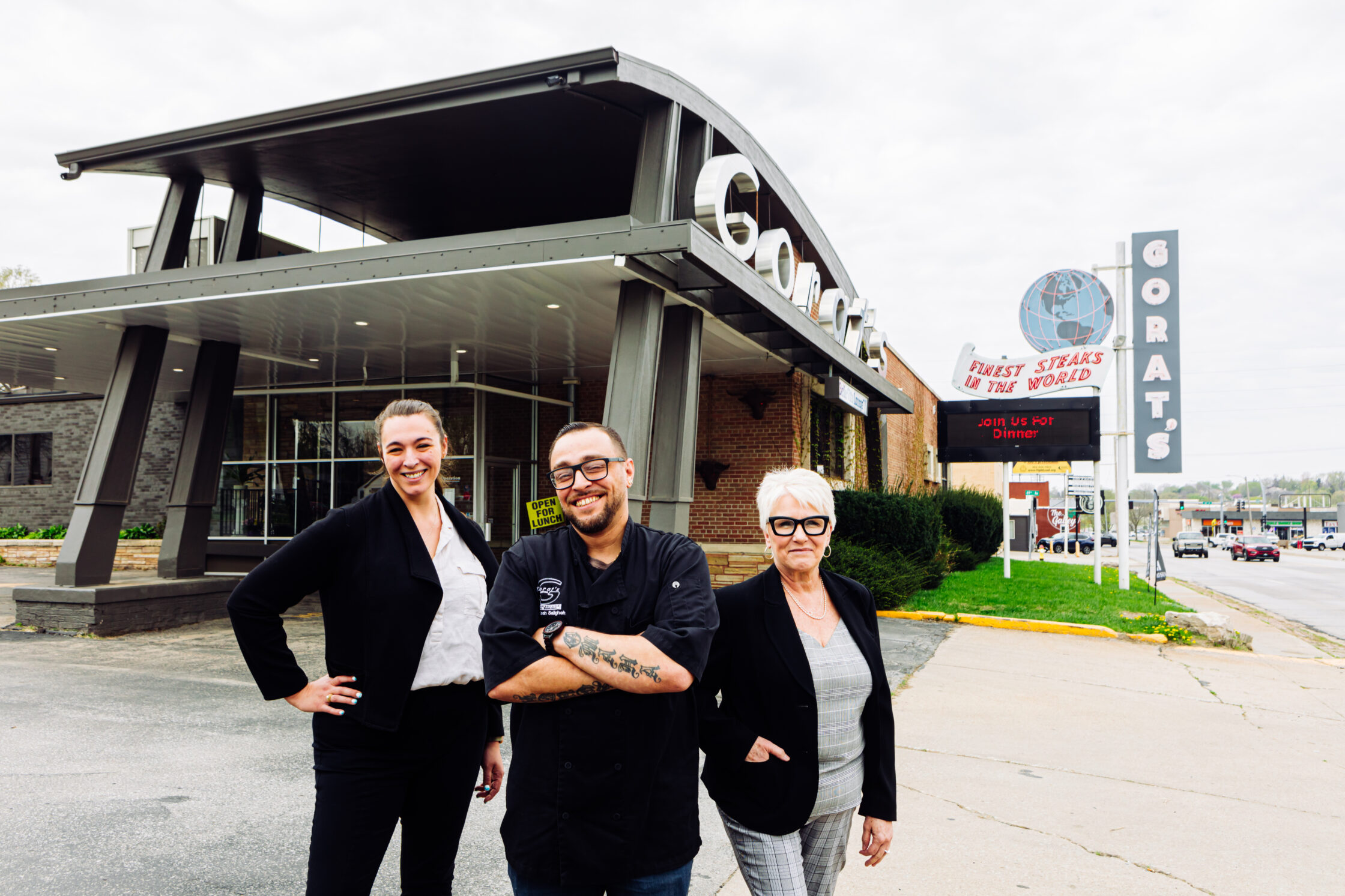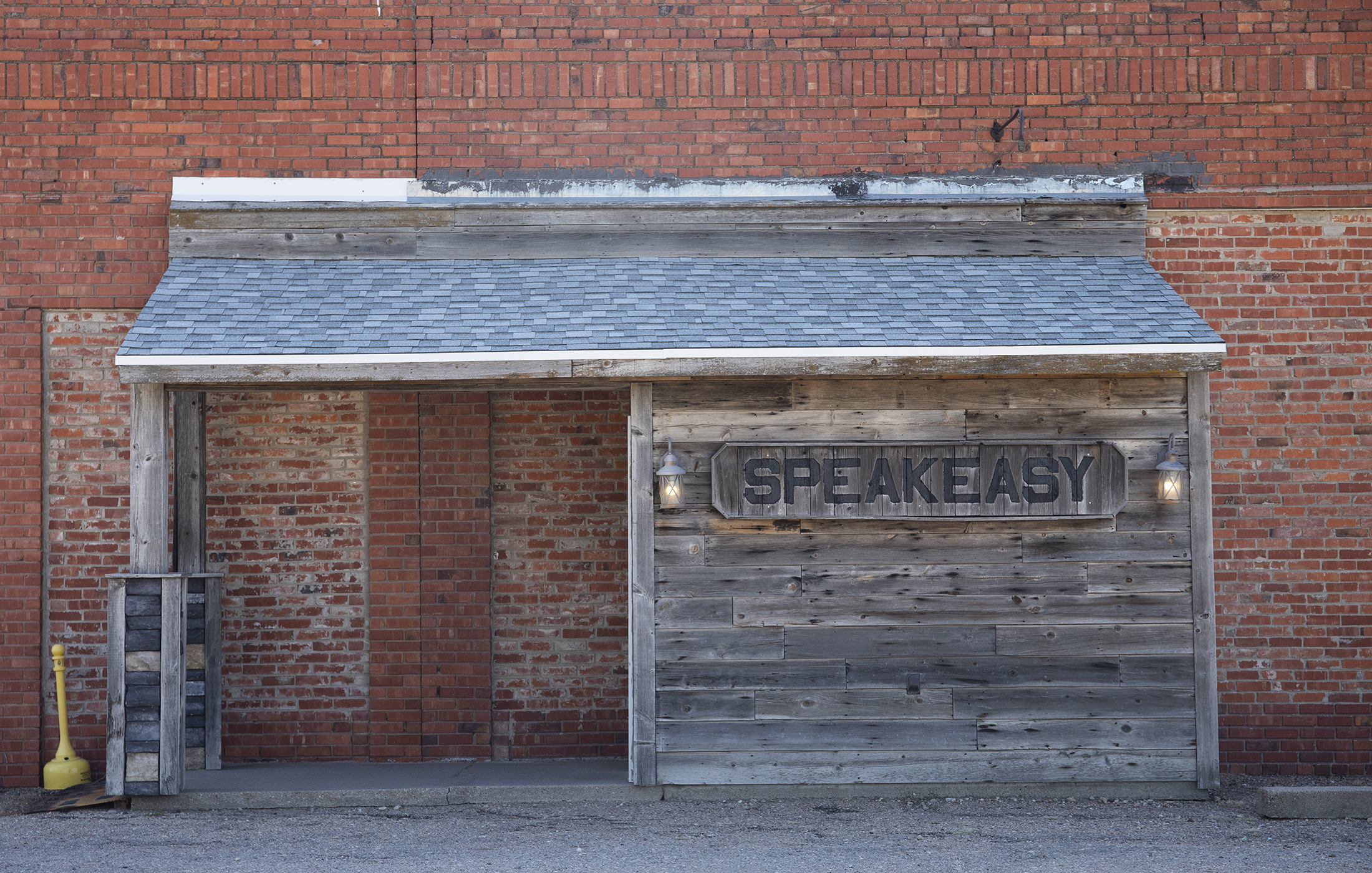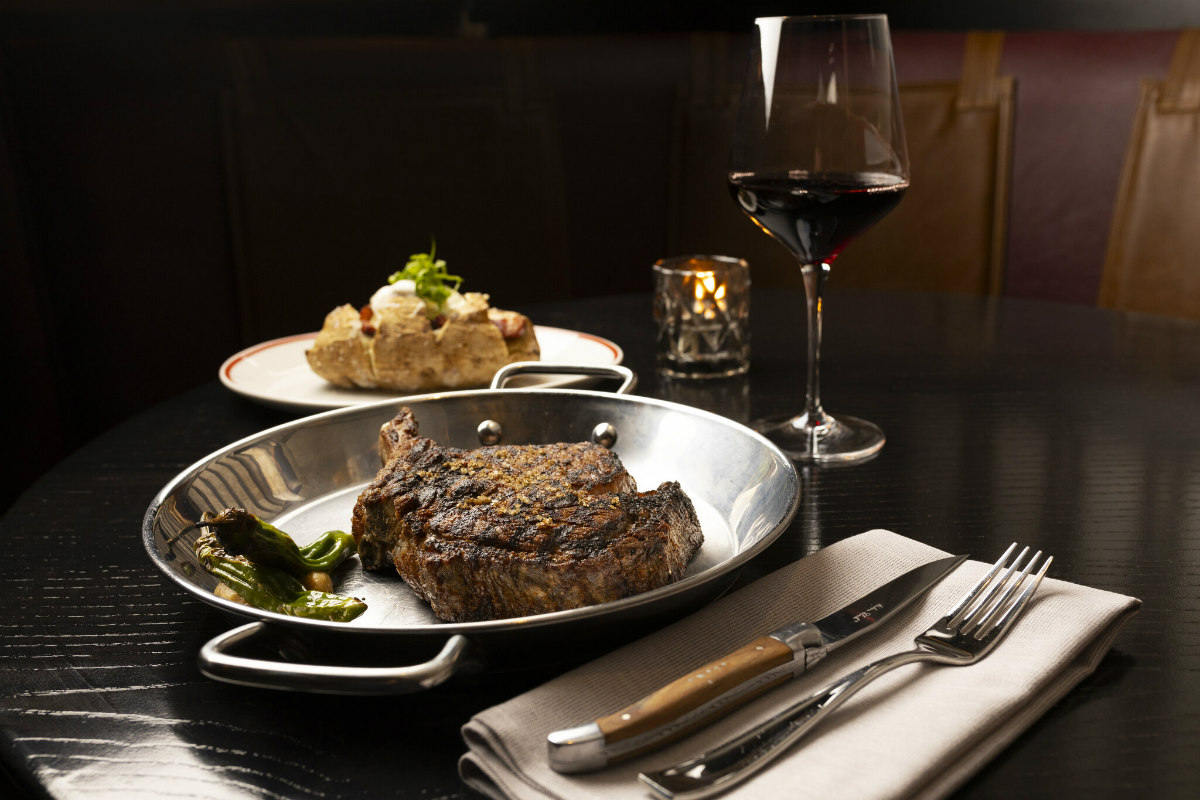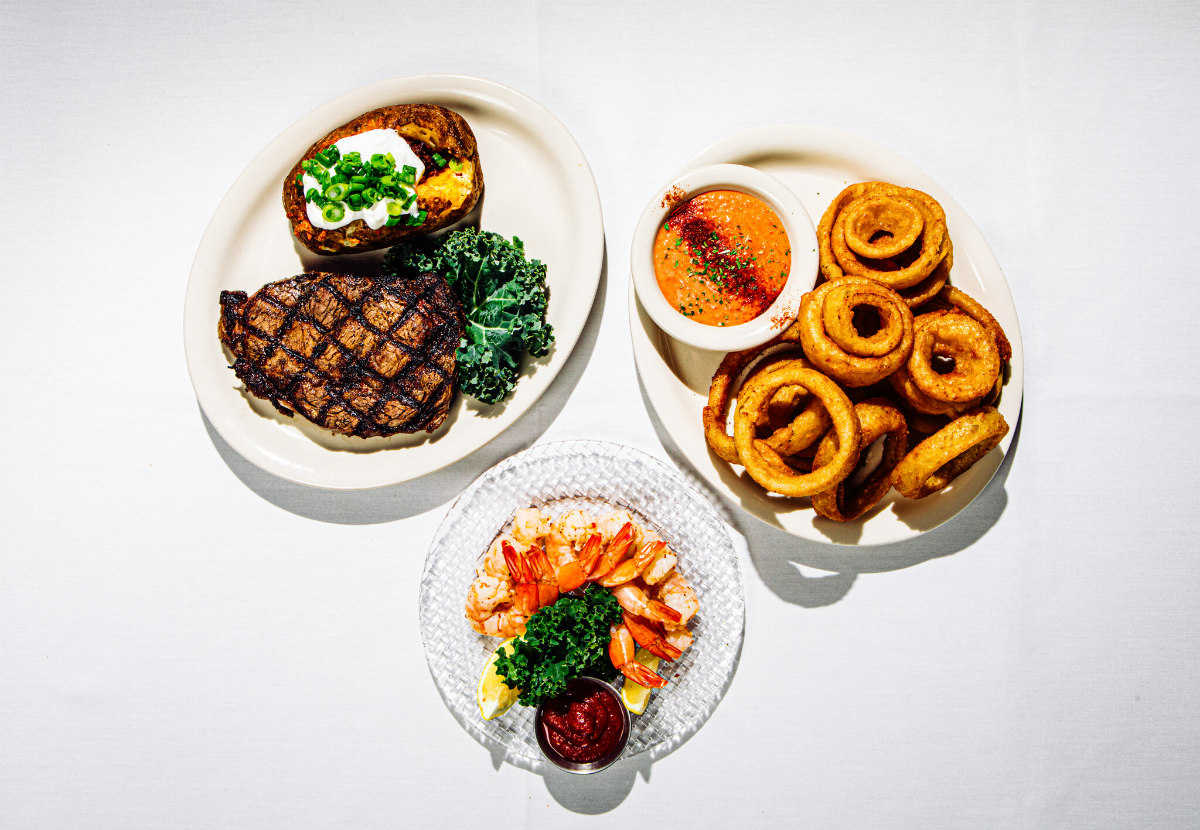The original idea for Brother Sebastian’s, the monastery-themed steakhouse in west Omaha that’s now been around for nearly 50 years, was sketched out on the back of a pizza box.
Loren Koch, the original owner, drew his idea for the themed restaurant, with its many small dining rooms, fireplaces and cozy ambiance.
“All of it came completely from his imagination,” said Scott Lurry, who bought the restaurant two years ago after working for Koch for 43 years.
In 1996, when the original location burned down, Koch and Lurry reimagined it once again, spending long nights together with a tape measure and a “Drafting for Dummies” book to recreate what I think can by now surely be called an Omaha restaurant legend.
Koch died in 2023, but his pizza box creation remains.
Brother Sebastian’s is wonderfully weird, full of moody nooks and crannies, a room with faux stars on the ceiling, many fireplaces, red tinted glass and stained glass windows and bookshelves stuffed with volumes and statues of somber monks. One room is dedicated solely to a salad bar. In the parking lot, soft Gregorian chants play on a speaker outside.
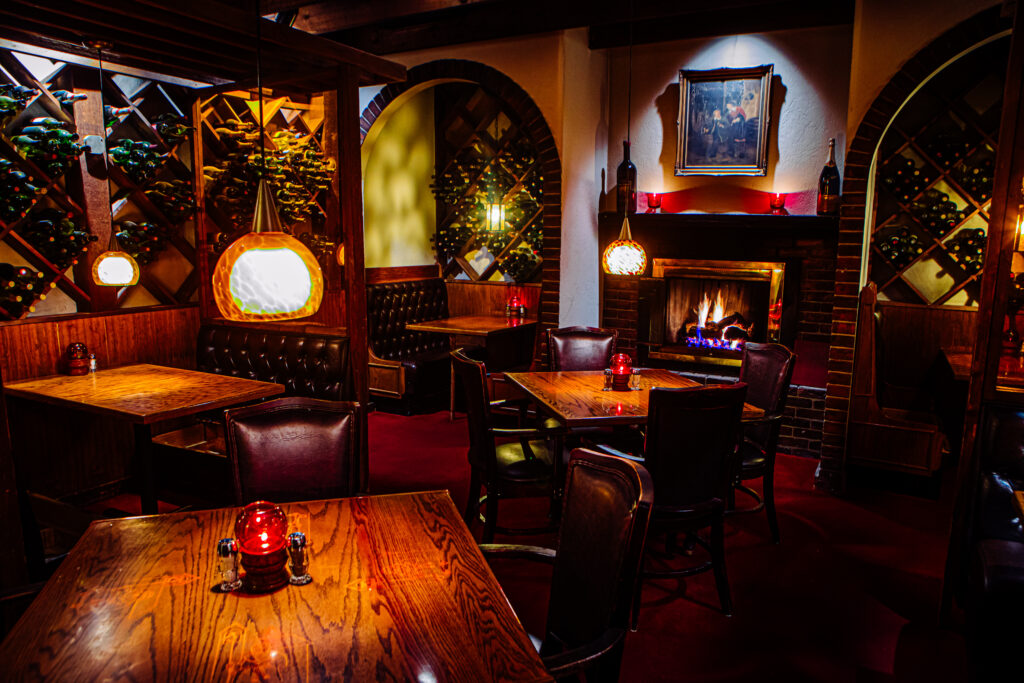
Wine racks line the walls — Koch visited California abbeys that made their own wine and wanted an Omaha version — and the restaurant has always had a long wine list, a rarity when it opened in 1977.
It still stands out today, 48 years later. In a city that’s full of steakhouses, as this series demonstrates, Brother Sebastian’s remains one-of-a-kind. And here’s what else: most of the food we found on our recent visit, aside from a few missteps, is quite good, too.
We got seated in what I’ll call the forest moonscapes room: the aforementioned black ceiling is studded with stars, and the back wall is lined with Brother Sebastian-themed stained glass church windows. Lurry said later it’s meant to feel like you’re dining outside.
A large triptych of forest-themed paintings, one with a huge glowing moon, adorns another wall. The original paintings got damaged in the 1996 fire, so artist Deb Plog recreated them for the new restaurant. Seated in front of the trio, we got down to business, ordering our Steak Town menu lineup, beginning with onion rings and shrimp cocktail, along with our two drinks.
The onion rings, more thickly breaded than the others we have tried so far, are served a deep, golden brown, with an exterior almost caramelized in its crunchiness. The shrimp cocktail arrived large and fresh, with a smoother cocktail sauce. Horseradish peeked through here and there, but seemed stirred into the sauce instead of blended, making some bites spicier than others.
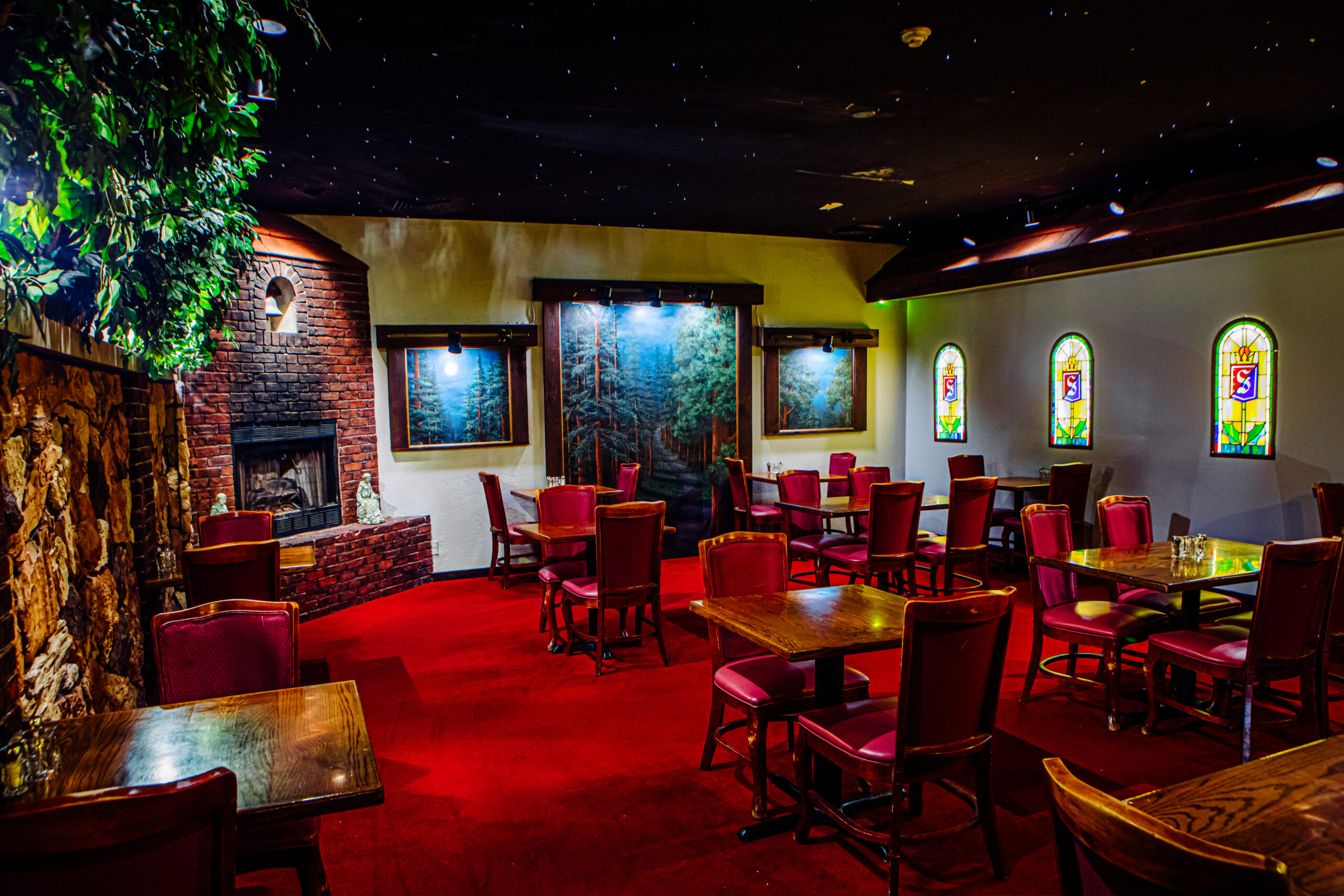
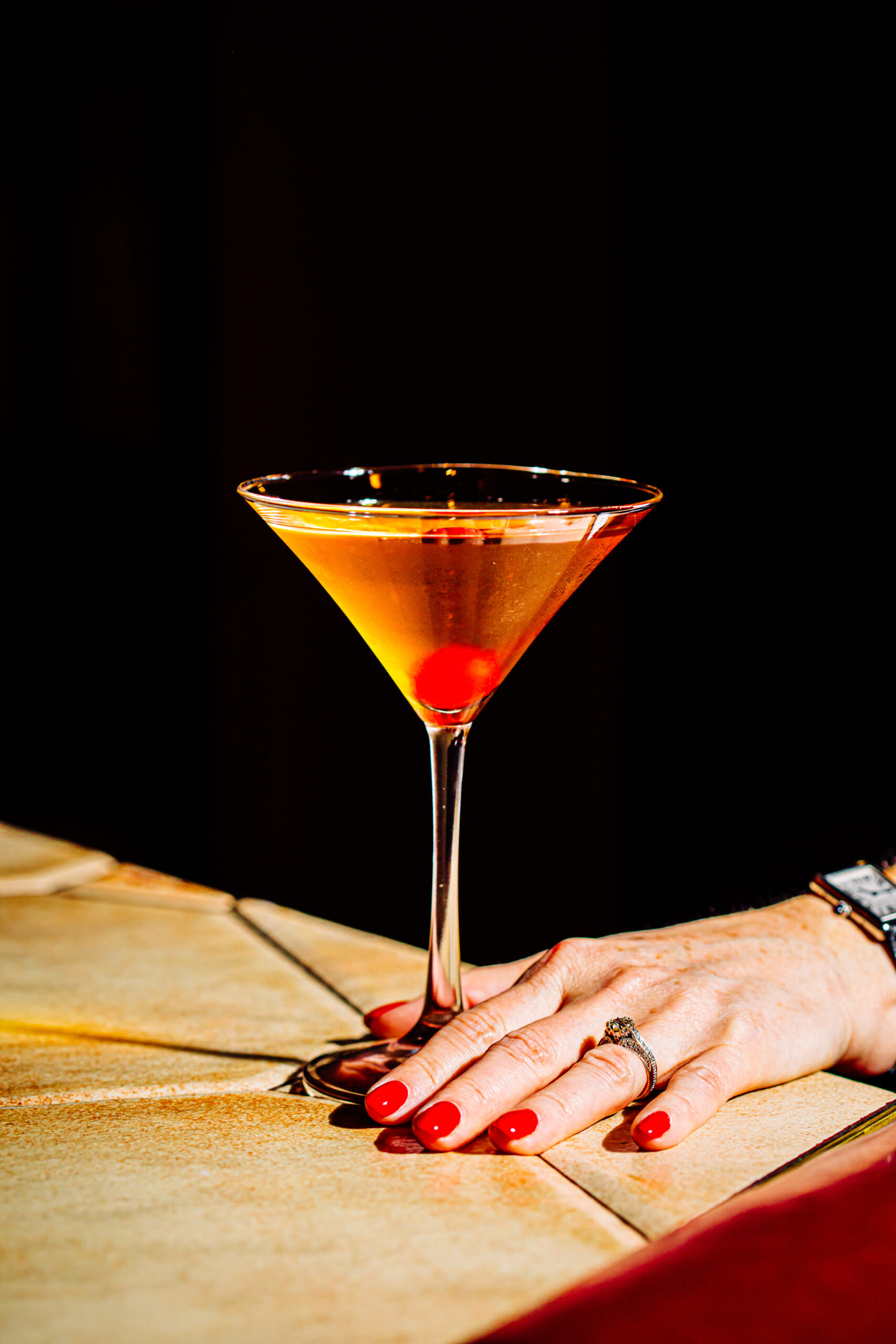
Cocktails were uneven. I liked the perfect Manhattan, on the menu under premium whiskey drinks. Made with half dry vermouth and half sweet vermouth, it was balanced and ice cold. We found less balance in both a Sazerac, which was too heavy on absinthe, and a Negroni, more gin-heavy than it should have been. The staff is knowledgeable about the wine list and happy to make recommendations. I tried a bold California cabernet that paired nicely with the beef to come.
The salad bar, I think, is worth a few words. Big enough to fill its own room, it includes lots of toppings, two kinds of lettuce and at least one homemade salad dressing. Matthew said he likes it better than another well-known steakhouse salad bar, the Drover’s that we’ll try later this year (blasphemy!) but I will admit, it’s a nice lineup of ingredients and everything we tried tasted fresh.
Lurry said he started working at Brother Sebastian’s in 1980 as a bartender, then slowly moved up, eventually becoming manager, which, he thought at the time, he might try for a year or two. Lurry and Koch spent a decade discussing the future of the restaurant and running it together. Lurry has changed very little since purchasing it in 2023.

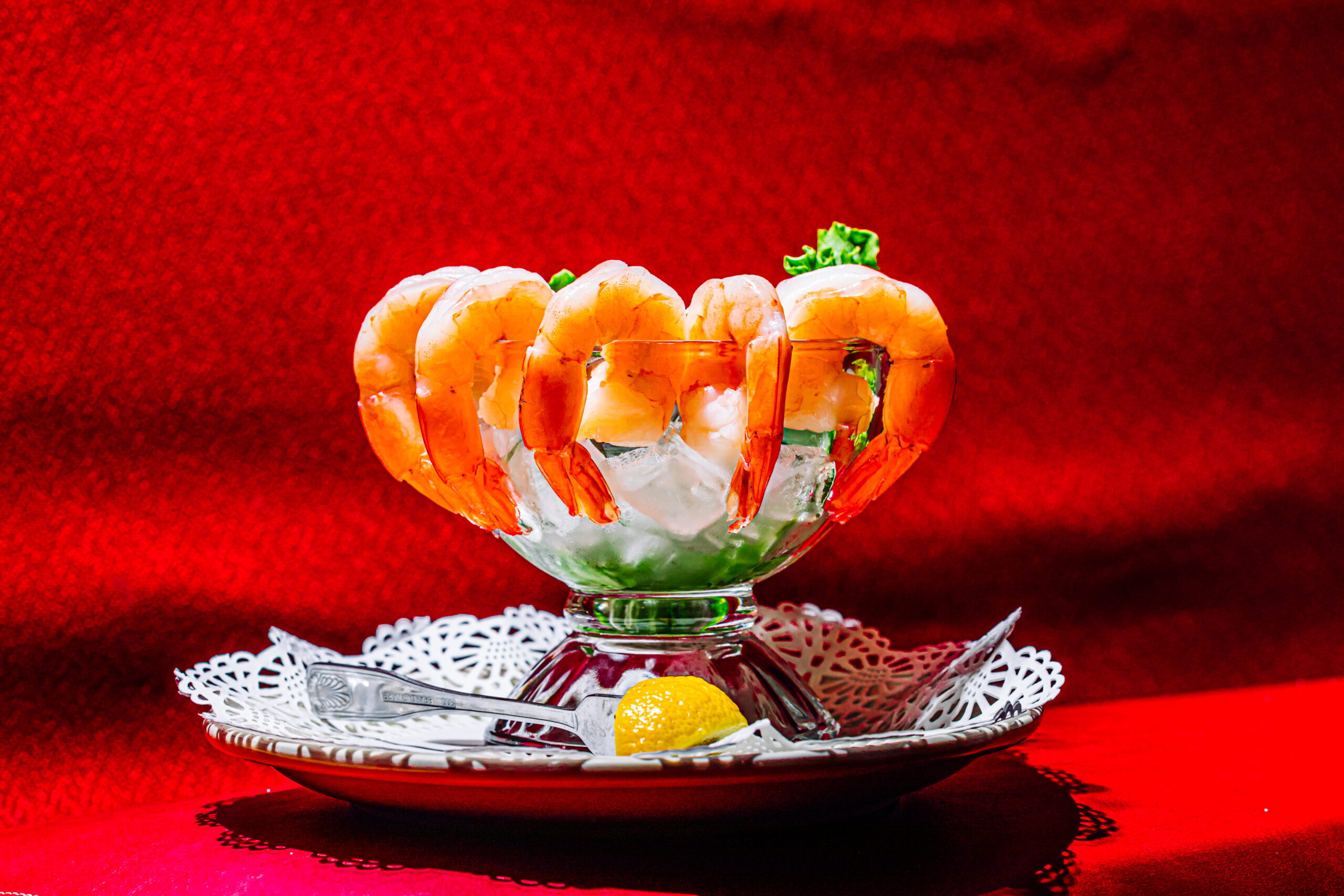
Nebraska Steakhouse Map
Our yearlong Steak Town series includes a year of reviews of Omaha steakhouses, plus four feature stories about steakhouses around the state of Nebraska.
It also includes this map, of every steakhouse in the state of Nebraska. Click the map for steakhouse details.
We’ve made several map updates already, thanks to Flatwater readers. Know of a steakhouse that we missed? Email Sarah Baker Hansen with the name of the steakhouse and the Nebraska town where it’s located.
“Believe it or not, our menu right now is probably 80% the same as it was when I first started working here in 1980,” he said. “Loren always had a philosophy — and I have adopted that philosophy — that simple is not a bad thing. We’re not trying to set the culinary world on fire here. We’re doing familiar food, and trying to get the beef right.”
Speaking of beef: For the first time so far, the filet we ordered outperformed the ribeye. Brother Sebastian’s serves a 12-ounce filet, larger than most, called the “St. Thomas cut.” The server noted that my medium rare order would result in a center closer to rare because of the thickness of the cut, which was fine with me. The resulting piece of meat was spot on, seasoned but not salty and with a satisfying grid of char marks.
A thinner ribeye came cooked to order but with a drier, less juicy finish. If we had it to order again, we’d both go for the filet, a rare occurrence thus far at an Omaha steakhouse.
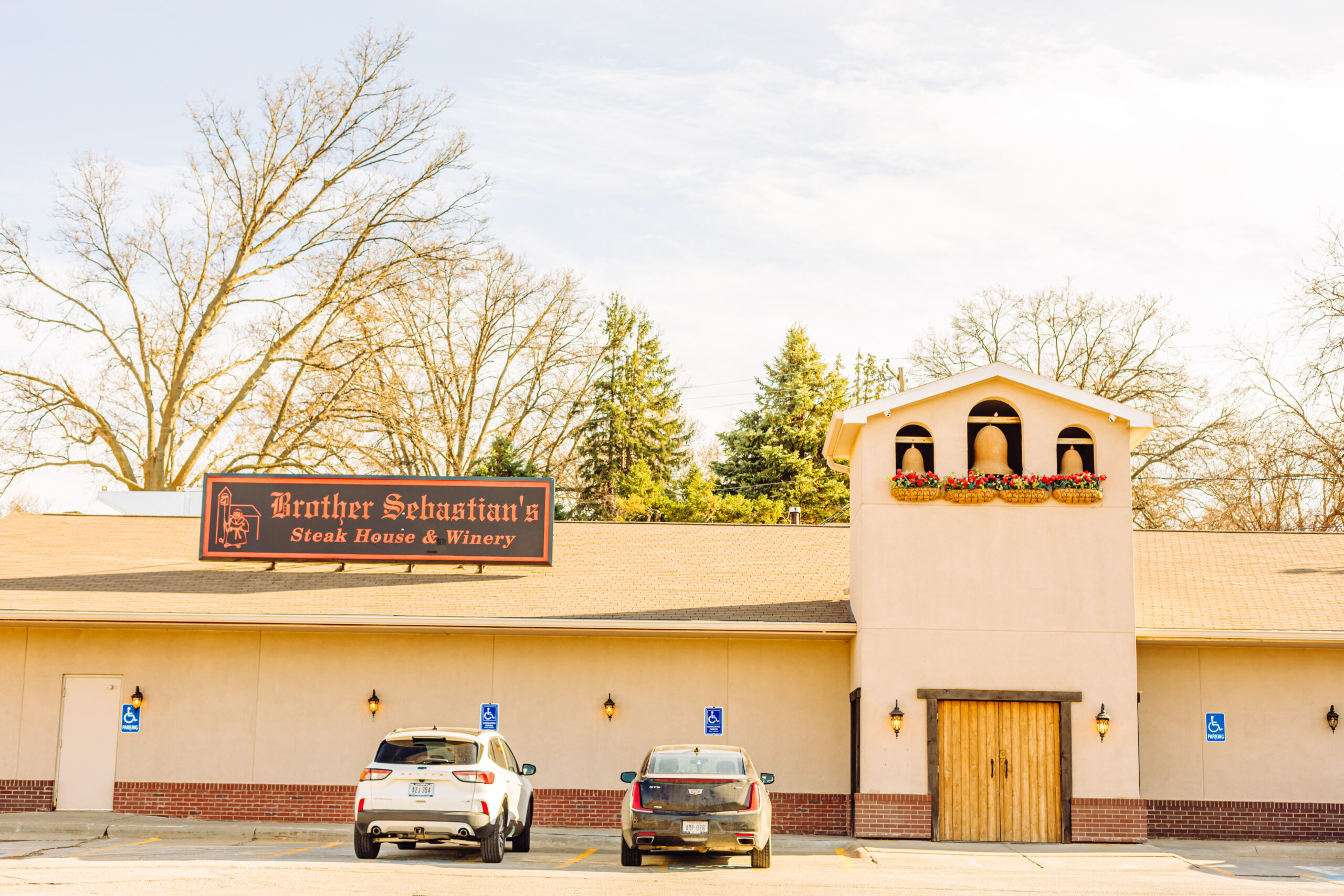
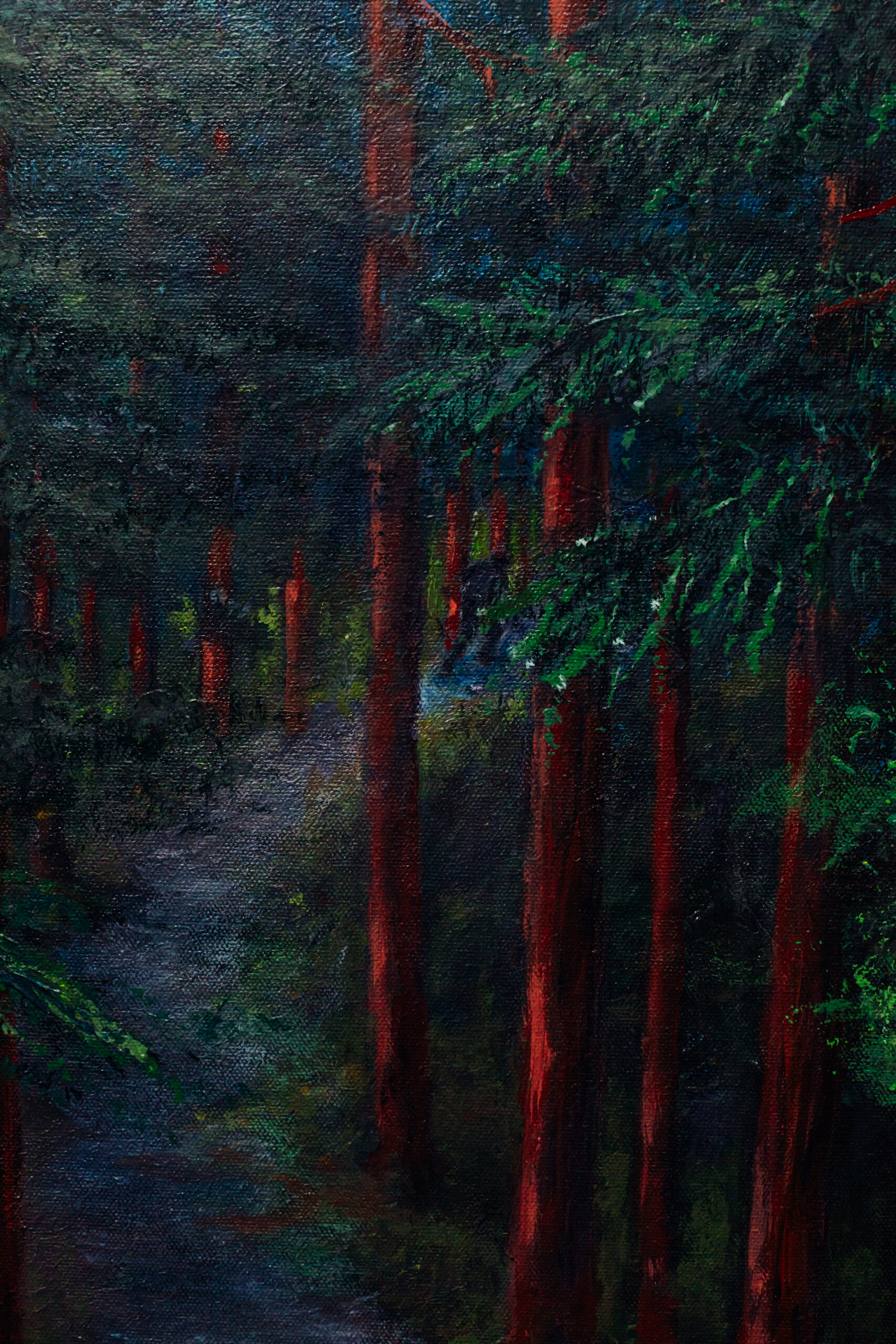
Lurry shops for the restaurant’s beef every week, getting quotes from four different vendors in an effort to keep the prices at Brother Sebastian’s reasonable. He said for the past six months, he’s primarily bought beef from Omaha Steaks. He said he tries to serve Angus when he can get a good price.
The signature beef dish at Brother Sebastian’s is prime rib. Like Jerico’s, the kitchen uses a “cook and hold” oven and starts the cooking process a day in advance.
The loaded baked potato, stacked an inch deep with shredded cheddar cheese and bacon bits, starred as a side dish. Baby carrots with a brown sugar glaze were a bit lackluster, and the side of spaghetti had a thin sauce on the sweet side.
The only real disappointment landed at dessert. We wanted to try the chocolate cake, which boasts nine different ways it involves chocolate, but it was sold out. Instead, we tried the raspberry bread pudding, which had clearly been warmed in the microwave: some bites were cold, while other bites were molten hot. I’d hoped for better.
Our visit ended on a positive note, as our server carefully packed up all our leftovers into boxes;
He was attentive throughout the night. The staff, I think, truly cares about making each visit a good one.
Before I left on the afternoon of my interview, Lurry walked me back to the trio of paintings to point something out. When Plog repainted them, she added a new detail: a small shadow of a man, disappearing into the forest. It’s meant to represent Koch.
“This whole entire thing,” he said, gesturing around the restaurant, “was Loren’s heart and soul. It became just as personal to me. It’s my job now to make sure that the idea lives on. To be the caretaker.”

